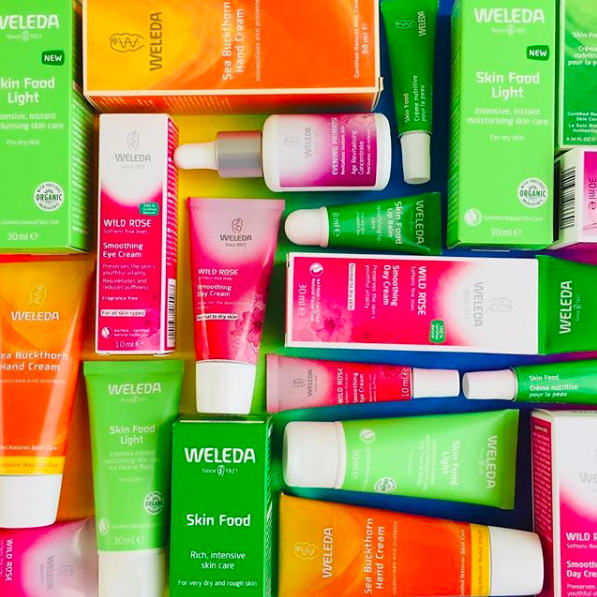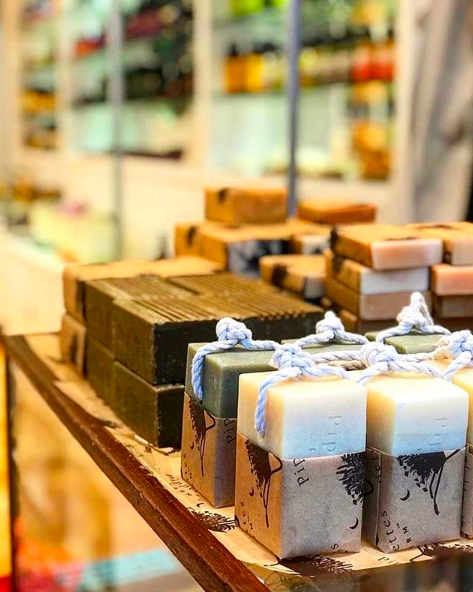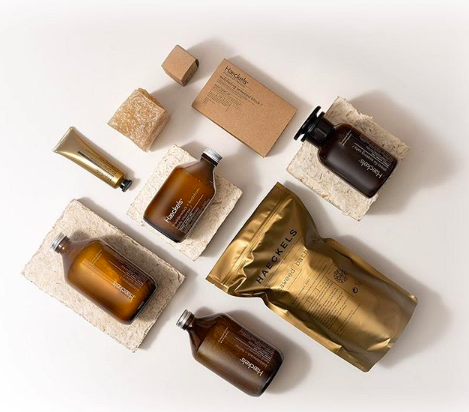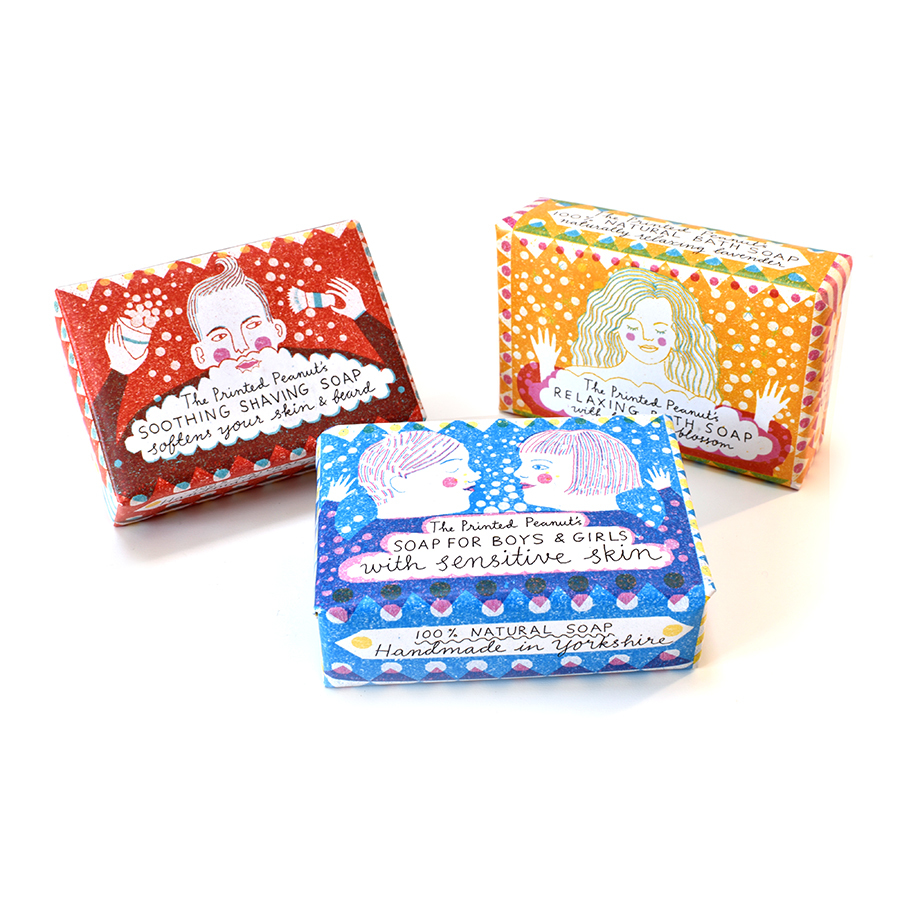Natural beauty - What does it all mean?
When it comes to natural beauty, the lists of what to avoid can seem terrifying and so off-putting. What do they all mean? And what’s the fuss about when it comes to natural beauty?
Here, a very basic start to a few of the vast number of curiosities that can be found in the ingredients list…
Colourants
Colourants are soluble synthetic agents that can be natural, or artificially produced. Some artificial colourants can be made from tar, and some can contain heavy metal salts, including lead. With natural colourants, they can be obtained from minerals, plants or animals. Colourants are also absorbed into the skin, so when it comes to the synthetic colourants, this can be pretty damaging. The toxins in colourants can irritate the skin, so if you have sensitive skin, steer clear.
DEA and TEA
Diethanolamine, DEA, and Triethanolamine, TEA, are ethanolamines — a chemical group comprised of amino acids and alcohols. DEA is used as an emulsifier in shampoos, shower gels and other ‘clean’ cosmetics. TEA is used as fragrance, pH adjuster and emulsifying agent. When mixed with certain preservatives, DEA and TES can each form nitrosamines, carcinogenic chemicals.
Fragrance
Fragrance can be created from natural or artificial compounds. Either can be a prominent sensitivity trigger.
GMOs
Genetically Modified Organisms, GMOs, are plants and other living organisms derived from molecular biotechnology techniques that alter the genetic make up - pretty scary when you think about it.
Parabens
Parabens are a type of preservative used to prolong the shelf life of many health and beauty products. The problem with parabens is that they can penetrate the skin and remain within the tissues. Once there, they are believed to disrupt hormone functions. There is a wonderful piece on Elle.com which discusses parabens more, so if you are interested, read on here.
PEGs
PEGs, polyethylene glycols, are petroleum-based compounds widely used in cosmetics as thickeners, softeners, and moisture-carriers, so frequently used as beauty cream bases. They are also used as laxatives. Not quite as glamourous.
Petrochemicals
Bentonite clay - A natural super hero, brilliant for purifying pores & tightening skin, with no long-term side effects
Most commonly, petrochemicals are used to extend the shelf life of cosmetics, and sometimes to “water down” or increase the spread-ability of a product. Petrochemicals can be derived from a number of things, including coal and natural gas, although the majority used today are made from petroleum. Ingredients created from petroleum tend to be irritating, sensitising and very drying on the skin, not to mention pore-clogging as well, so really not a great beauty tool. Petrochemicals will commonly be found on your ingredients list as ‘propylene’, ‘ethylene’, ‘butadiene’, ‘benzene’ or ‘xylene’, so try to steer clear of these.
Phthalates
Pronounced “thalates”, phthalates can be found in cosmetics, fragranced lotions, body washes, hair care products and nail polishes, to name a few, helping to prolong the scent of a product, moisturise and soften skin, to dissolve ingredients, and to impart flexibility for nail polish as it dries. A true nasty on the list, phthalates are linked to hormone disruption, developmental and reproductive toxicity, and cancer. Phthalates are often seen on cosmetic lists as any of the following: phthalate, DEP, DBP, DEHP and fragrance. They have been banned from cosmetics in the EU, but still exist in many US cosmetics, so one to be cautious of.
Silicones
Silicones are brilliant for giving a glossy, silky texture, so make for a wonderful additive in haircare products for treated or bleached hair. For skincare products, silicones fill in crevices to make skin look and feel smoother. Hydrophobic silicones form a seal over the skin, which allows companies to claim longer-lasting "hydration" benefits. But these positives are purely short-term effects. As a result of these filling benefits, silicones, interfere with cell renewal and can cause irreparable damage. Keep an eye out for words ending in ‘cone’, ‘conol’, ‘silanes’ or ‘siloxane’ as these are all silicones.
SLS, SLES and ALS
Sodium laureth sulphate, SLES, sodium lauryl sulphate, SLS, and ammonium lauryl sulphate, ALS, are sulphates used in shampoos, shower gels and cleansers to help make that wonderful foamy lather that ‘creamy’ washes have. It is a common irritant for skin and eyes, is believed to cause frizziness in thick/curly hair and accelerate colour fade. Sulphates also provoke questions about sustainability. Sulphates don’t degrade easily and can remain in the environment long after use. Petrolatum is running out, so many companies are going 'sulphate-free' for eco-reasons
Triclosan
Triclosan is used mainly in deodorants, cleansers, and hand sanitisers as a preservative and an anti-bacterial agent. It doesn’t easily degrade and can build up in the environment after it has been rinsed away. Triclosan can pass through skin and is suspected of interfering with hormone function. It is irritating to the skin and eyes, and is incredibly toxic to aquatic organisms, attributed to causing long-term adverse effects in the aquatic environment. In the environment, Triclosan also reacts to form dioxins, which bioaccumulate and are toxic. In essence, try to steer clear of this one.
Reassuringly, the market for natural beauty is increasingly full, which brands making inspiringly powerful products using natural ingredients and a wealth of knowledge. To avoid listing an exhaustive list, here are a few of my personal favourites…
Soveral is a client of mine that may be a favourite indefinitely. The brand’s ethos, the relentless strive for quality, the knowledge, the team, the Volcano Ash face mask, the tea - I’m honestly not sure which is the best bit. For those wanting to understand more about the skin and natural ingredients and techniques, I can wholeheartedly recommend Alexandra’s book, ‘Perfect Skin’ - a complete treasure trove of knowledge made entirely digestible. Their social media channels talk through the array of natural ingredients, sharing the knowledge and showing off natural superheroes - see what you think.
Anyone who has asked me for suggestions for their little one, or just natural beauty for beginners, Weleda is affordable and brilliant for absolutely everything, not to mention the wonderful commitment to doing better Weleda continues to challenge brilliantly. The shampoo, the bath milk, problem skin products, juice elixirs, skin food, nappy cream - I love absolutely everything.
Pippettes is a brand I have recently come across, thanks to their new shop on Exmouth Market. If you are looking for affordable, no-nonsense natural goodness, look no further. There is something really charming about how they do things - the glass bottles, the lovingly created pieces, the therapeutic properties considered and used - take a look.
Haeckels is an aesthetically heavenly brand created from the shores of Margate in 2012. Dom, the founder, is a truly inspiring ambassador of seaweed. “Seaweed hydrates; it’s rich with valuable vitamins, minerals and amino acids; it’s anti-bacterial, skin rebuilding and anti-inflammatory; it’s all-natural, and all around us. Under licence, we harvest it by hand from the beach just steps away from our shop.” The health-giving properties of the sea are boundless, as shown by each of these products, and Haeckels’ natural products are every bit as effective as chemical-derived alternatives. Did I mention beautiful too?
The Printed Peanut’s 100% natural, handmade soap bars are made in Yorkshire. Each bar is poured and cut by hand and packed in 100% recycled paper wrappers. They are made entirely of natural, plant-based ingredients, guaranteed cruelty-free, vegan, and generally free from all the nasties.
I hope this helps. Obviously there are hundreds, thousands of other ingredients to learn about , but this, to me, feels like a good place to start. There is a huge market out there for natural beauty, so take your time, know what you are buying and indulge in something that will do all sorts of good.
If you have other ingredients that you would suggest people read up on, please do share.







